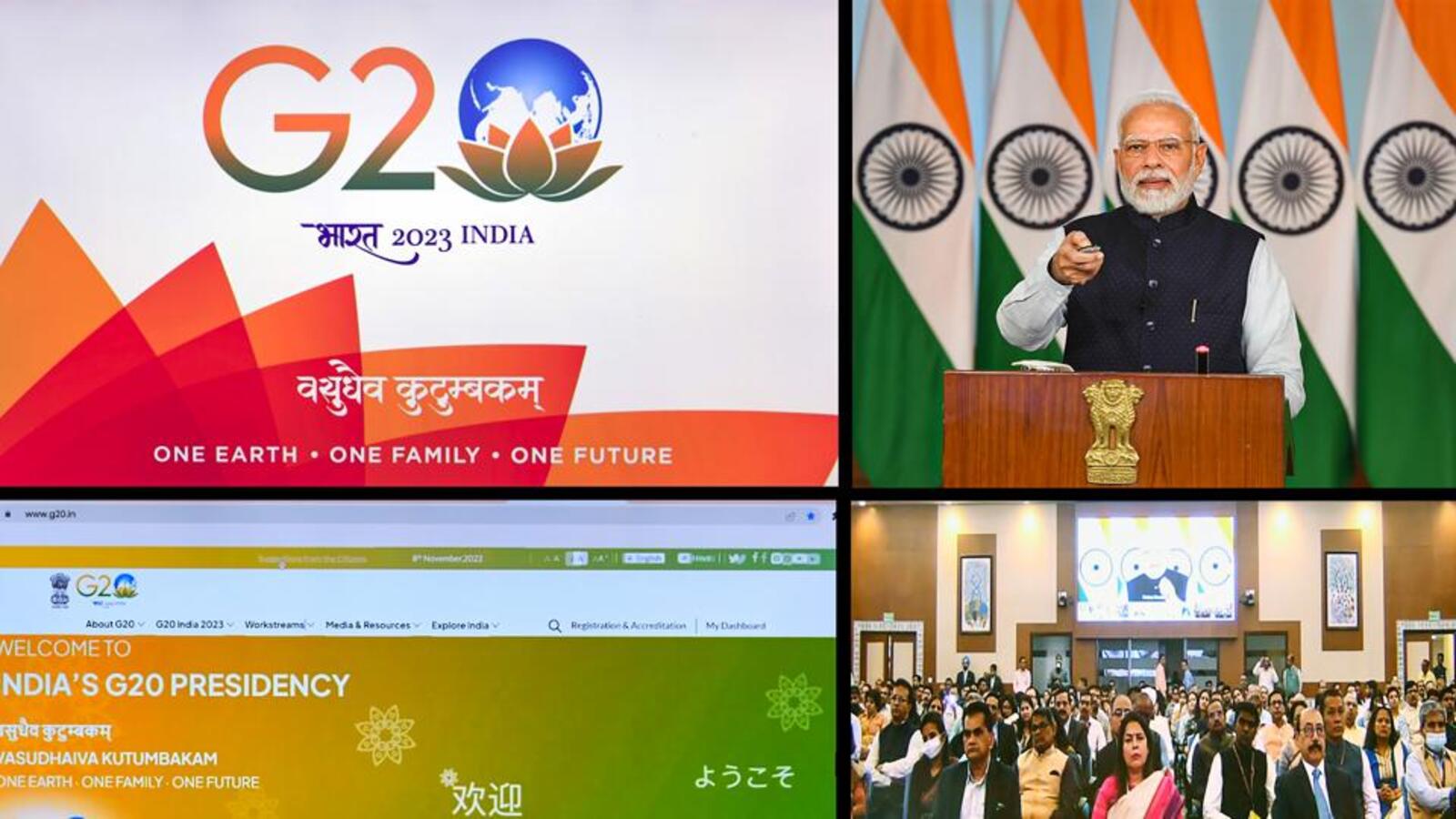
The G20 presidency of India officially began on December 1 after the unveiling of the country’s logo, website, and theme by the Indian government. One Earth, One Family, One Future was Modi’s rallying cry, which was aptly emphasised by the phrase “Vasudhaiva Kutumbakam.”
G20?
- The G20 is a global organisation that was founded in 1999 by the leaders of 20 of the world’s largest economies.
- The European Union and 19 of the largest economies in the world are included.
- More than 80% of the world’s GDP, 75% of trade, and 60% of the population are represented by its members.
- The leaders of the G20 nations occasionally take part in summits to address the topics or challenges that affect the world.
- India has been a G20 member since the group’s founding in 1999.
Current Global scenario and India’s G20 Presidency
- War between Russia and the west: It must however take into account a complex geopolitical situation, including increased hostility between the US and China and tensions between the G7 and Russia over the conflict in Ukraine.
- India’s attempts to practice meditation: The recent admonition from PM Modi to President Putin that “now is not the time for conflict” is rooted in the values of nonviolence and peace that are part of the Buddha and Gandhian legacies.
- Energy crisis: Developmental priorities must come first. It will be necessary to find common ground on disagreements on energy diversification and the newest trade and technological challenges.
- Economic crisis: Stagflation in the US, China, and Europe poses a threat to the prognosis for the world economy. An key requirement is macroeconomic and trade policy coherence.
- Disruptions in the supply chain: Modi promoted collaboration on three crucial issues—trusted source, transparency, and time frame—at the “Global Supply Chain Resilience” meeting in October 2021. He mentioned the disruption of supply chains brought on by the Ukraine issue at the SCO Summit this year, as well as the severe energy and food shortages.
India’s Stand
- Growing economy and rising stature: India’s G20 leadership corresponds with its rising stature and rapid economic growth rate, as well as its growing confidence.
- Growingly important to the developing world is the nation’s outstanding performance with the Unified Payments Interface (UPI), Direct Benefits Transfer, and Aadhaar authentication in welfare systems.
- Vaccine TRIPS waiver requests: The CoWIN platform’s adoption improved vaccine equity and accessibility. India has argued persuasively in favour of a TRIPS waiver to guarantee fair access to vaccine production.
- SAGAR and Blue Economy: The G20 may take notice of India’s recent international initiatives, such as SAGAR (Security and Growth for All in The Region), “blue economy,” “clean oceans,” and infrastructure that is disaster-resistant.
- India as true climate leader: PM Modi’s “Panchamrit” announcements at COP26, including net zero by 2070, 500 GW of non-fossil energy capacity by 2030, 50% of energy needs met by renewable sources by 2030, a reduction of 1 billion tonnes of carbon emissions by 2030, and a reduction of the carbon intensity of the Indian economy to less than 45% by 2030, established India as a climate leader.
@the-end
The broadest and most vulnerable constituency, notably in South Asia, should be represented by India’s presidency. This has the potential to significantly enhance the economic integration of South Asia, which is so important for India’s progress.
